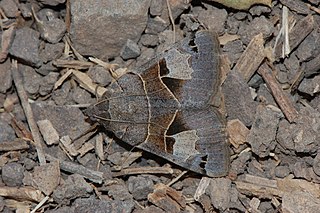
Drasteria is a genus of moths in the family Erebidae.

Drasteria cailino is a moth of the family Erebidae first described by Alexandre Louis Lefèbvre de Cérisy in 1827. It is found in southern Europe, the Near East and Middle East up to the western Himalayas in the east. In the Levant, several isolated populations are present in Lebanon, Syria and Israel.
Drasteria flexuosa is a moth of the family Erebidae first described by Édouard Ménétries in 1847. It is found in the semi-deserts and deserts from eastern Egypt, to Israel, Jordan, Syria, Kazakhstan, China, Mongolia and Afghanistan.
Drasteria herzi is a moth of the family Erebidae first described by Sergei Alphéraky in 1895. It is found in Transcaucasia, Turkmenistan, Khirgizia, Turkey, northern Iran, Israel, Jordan and Sanai.
Drasteria oranensis is a moth of the family Erebidae first described by Rothschild in 1920. It is found from Algeria, to Libya, Egypt, Israel and Saudi Arabia.
Drasteria hudsonica, the northern arches, is a moth of the family Erebidae. The species was first described by Augustus Radcliffe Grote and Coleman Townsend Robinson in 1865. It is found from Alaska and Yukon to California, east to New Mexico and Manitoba.
Drasteria petricola, the little arches, is a moth of the family Erebidae. The species was first described by Francis Walker in 1858. It is found in western North America from Yukon and the Northwest Territories south to New Mexico in the Rocky Mountains, east to Manitoba.
Drasteria tejonica is a moth of the family Erebidae. It has been recorded from California, Arizona, Colorado, Utah and New Mexico.

Drasteria edwardsii is a moth of the family Erebidae. It is found from Washington, through Oregon to California.
Drasteria mirifica is a moth of the family Erebidae. It is found in North America, including Nevada, Oregon and California.

Drasteria fumosa, the smoky arches, is a species of moth in the family Erebidae first described by Strecker in 1898. It is found from the US state of California east to Utah and Texas.
Drasteria inepta, the inept drasteria, is a moth of the family Erebidae. It is found from Arizona to Texas, north to Colorado and Utah.

Dyspessa is a genus of moths belonging to the family Cossidae. It was described by Jacob Hübner in 1820.

Colias nebulosa is a butterfly in the family Pieridae. It is found in the eastern Palearctic realm.
Drasteria yerburyi is a moth of the family Erebidae. It is found in Somalia, Eritrea, the United Arab Emirates, Yemen and Iran.
Drasteria maculosa is a moth of the family Erebidae. It is found in North America, where it has been recorded from Nevada and California.
Drasteria pamira is a moth of the family Erebidae first described by Oscar John in 1917. It is found in Kyrgyzstan, Tajikistan and Afghanistan.





